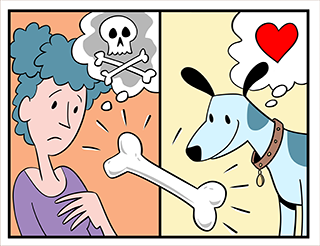Overview of Cognitive Biases

In an ideal world, human beings would be entirely rational all of the time. When participating in political conversations, we would weigh all of the facts dispassionately, applying basic logic to come up with our conclusions. We would not make mistakes, and we would never be blinded by our emotions.
Thankfully, this is not how the world works. We are human beings, not robots. We do make mistakes, and we let our emotions get the better of us. We fall in love, we get angry, and we try to make some sort of imperfect sense of the world around us.
Sometimes we make mistakes because we are doing our best to navigate a world of information overload, taking shortcuts along the way. At other times, our own wishful thinking causes us to rely on faulty logic. Confronted with unpleasant facts, we engage in unconscious mental acrobatics in an attempt to avoid the truth. These are examples of cognitive biases.
The fact that we are biased does not mean that we are bad people. It simply means that we experience “faulty ways of thinking” that appear to be “hardwired into the human brain.”1
This is not about liberals vs. conservatives. These biases transcend political orientation. We are all biased.
If you search for more information on these topics, you might be surprised to discover just how many different ways human beings can make mistakes. As of August 2018, the Wikipedia entry on this topic lists 114 cognitive biases related to decision-making, 28 cognitive biases which affect how we interpret our own motivations and those of others, and 51 biases related to memory. This is a very long list!
This section of Propaganda Critic briefly introduces a few of these cognitive biases, highlighting those which are particularly useful in the context of propaganda analysis.
After you finish with this site, we hope you will be motivated to seek out additional research on this topic. We are particularly fond of Jesse Richardson’s Your Bias Is.2 Created as part of an innovative program called “School for Thought,” the micro-site has been viewed almost eight million times and is used in classrooms around the world.
If you would like to drill down even deeper, The Cognitive Bias Codex is a fascinating visual representation of cognitive biases created by Buster Benson and John Manoogian.3
References
1 Ben Ya Goda (2018, September) “The cognitive biases tricking your brain.” The Atlantic.
2 Jesse Richardson (2018) “24 cognitive biases stuffing up your thinking.” Your Bias Is.
3 Buster Benson and John Manoogian (2016) “Cognitive Bias Codex” Wikipedia. For additional background on this chart, see: Buster Benson (2016, September 1) “Cognitive bias cheat sheet. Because thinking is hard” Better Humans.
